Eighty years ago an uncle I never met enjoyed fifteen minutes of fame as a war hero, but it came at a cost I cannot calculate. My dad’s brother Teddy was born in 1913.
His arrival book ended the Great War for my family, because my father arrived six years later after my grandfather came home from a conflict he no doubt hoped would be the only one he would experience.
It was not to be. Uncle Teddy went to war in 1939 along with my dad and grandfather. For Teddy, the experience reached a pinnacle of sorts in August 1940 when his ship, the Severn Leigh, was sunk by the U-37 commanded by Kapitänleutnant Victor Oehrn.
The events surrounding the sinking were controversial in Britain, because there were claims the U-Boat crew fired on the survivors when they were in the water.
My uncle was second officer, who, along with the Master, Robert Hammett, and a dozen or so other survivors, set out on an incredible voyage in two open boats, travelling 1200 miles to the west coast of Scotland.
It is beyond me how any of them survived the fourteen days it took to reach land. Some of the men became deranged from drinking seawater, leaving grim decisions for those who refrained.
They got by on a spoonful of condensed milk a day. The boats eventually came ashore on the Isle of Harris where they were spotted by some boys going to school. Help was eventually summoned. My uncle Teddy was the first merchant seaman to be awarded the newly inaugurated George Medal for his actions and Captain Hammett received the OBE.
Both men were awarded the Lloyd’s Medal for Bravery at Sea. Teddy commanded one of the block ships for the Normandy beaches on D-Day and finished his war bringing back an ocean-going tug from the USA.
I have some of his wartime letters to my dad where he hints at good times staying in the hotel in New York City where British Merchant Navy officers were based. There were only so many blondes and such little time. He died a little while before I was born.
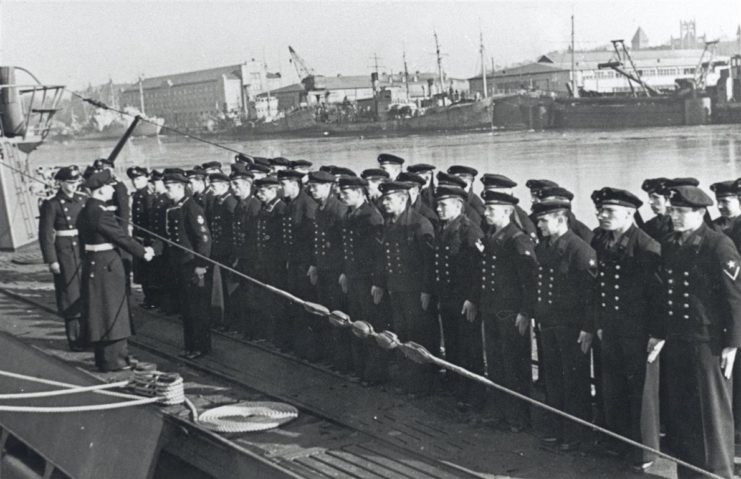
Victor Otto Oehrn received the Knight’s Cross from Admiral Dönitz at Lorient on 21st October 1940. The U-37 had accounted for over a hundred thousand tons of shipping on the patrols that included his encounter with my uncle.
Oehrn was promoted to take on a position commanding U-Boats in the Mediterranean. His career waxed and waned a bit but he went on to serve on the staff of Field Marshal Kesselring before an abortive transfer to the headquarters of Erwin Rommel in North Africa led to disaster.
Oehrn never took up his new role, being seriously wounded and captured by the British during transit. He was fortunate to be included in a prisoner exchange in late 1943 after which he returned to naval matters commanding the U-Boats in the Normandy area at the time of D-Day, where he faced my uncle Teddy for the second time.
Oehrn’s final posting was as a staff officer at operational headquarters of the Kriegsmarine. He went into captivity in May 1945 and died, aged ninety, in 1997.

I am, in some ways, fortunate to be able to dovetail my family history so closely with a Knight’s Cross recipient; but this superb book by Jeremy Dixon makes plain that there must be many other descendants of Allied seamen in a similar position.
He lists the 122 U-Boat commanders who were recipients of the famous medal. Of that number, two were also awarded the Oakleaves, Swords and Diamonds; while three others received the Oakleaves and Swords.
This makes for an impressive total, underscoring the tenacity and courage of the men commanding the U-Boats. It is entirely wrong to underestimate or denigrate their courage and resilience, even though they were performing a somewhat piratical and brutal kind of warfare. Everyone was doing it.
There are men included in this compendium who became legends, including Günther Prien who used great skill to sink the battleship Royal Oak at Scapa Flow and later on the Arandora Star, a Blue Star Line passenger ship taking hundreds of German and Italian prisoners and internees to Canada.
My grandfather had been her second engineer and knew the master and others who went down with her. 850 men were lost.
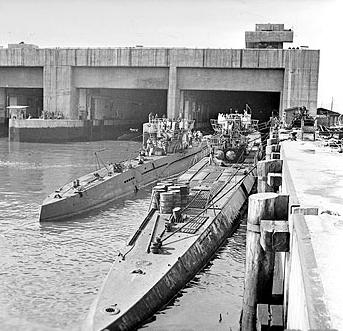
The terrifying success of the U-Boats was recognised as being the most critical element of the war against Nazi Germany which expended so much ingenuity, lives and effort to defeat.
Churchill saw winning the Battle of the Atlantic, as it came to be called, as the most important victory. However impressive the upcoming Tom Hanks movie Greyhound proves to be, the trailer identifies the vital nature of the war against the wolf packs.
The Allies had to defeat a singular group of amazing characters in the process. Some were ardent Nazis with whom it proves difficult to sympathise, while others were less strident. All of them were remarkable.
You can use the internet to look people up these days, but the mantra remains true that not all of what you need is in the ether and books remain the primary resource for much of what we need to learn about our past. This volume follows others I’ve seen looking at fighter aces and other figures and it does a first-class job.

THE U-BOAT COMMANDERS
Knight’s Cross Holders 1939-1945
By Jeremy Dixon
Pen & Sword Military
ISBN: 978 1 52671 873 0
It is cut and paste from my old reviews time as I introduce the latest title in the Images of War range from Mike Green, who I am sure is stocking up on military reference books, whatever passes for his beverage of choice, sanitiser and a ton of toilet paper as the coronavirus does what it does in sunny California.
Here in a windy and chilly England I have chosen to follow government edicts and self-isolate, not so much to ward off infection; but to get me away from the endless scaremongering and nonsense filling the airwaves. Rest assured I have a good stock of tea and biscuits to help me through my review work.
The book in front of us is typical of Mister Green’s output. There is a mass of information and a host of interest photographs piled into a book that costs less than twenty-eight US dollars or seventeen British pounds.
This time round the author takes us through the large number of US tanks and AFVs that appeared during the Cold War. While a good number made it into service, many others did not. The author directs us to the results born out of the blizzard of specifications and requirements that American manufacturers were expected to meet.
Sometimes it seems amazing that anything got built at all, but this sort of thing was not confined to the USA. This leaves us with a fascinating array of experimental vehicles and pre-production prototypes that sit nicely alongside the kit that passed the check list to progress into service.
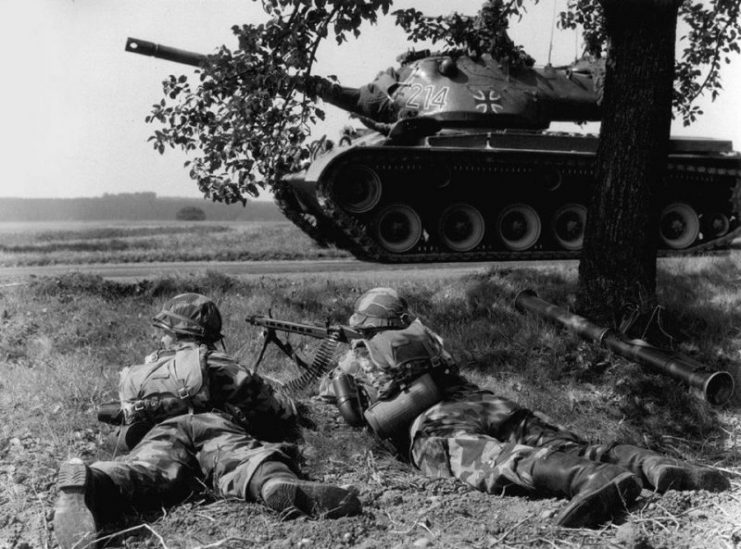
I admit to being a tad shallow about these things. I am not a photo collector, as such; but there are vehicles I’ve never seen and top of my list are the M551 Sheridan and M1 Abrams.
If someone could kindly bring examples of them over for me to photograph them running at the next Tankfest I would be most grateful. For me, Cold War vehicles are the stuff of the model kits and Minitanks treasures I had as a kid (some survive).
It is the Patton tanks and M113 APCs that hit the spot and I do like to see them running. Mr Green takes the trouble to illustrate the Warsaw Pact weaponry all the shiny American hardware was expected to confront.
I’ve got a soft spot for the PT76 amphibious tank, ZSU 23-4 Shilka and other bits of Soviet ironmongery I knew during my brief stint as a volunteer at the IWM Duxford.
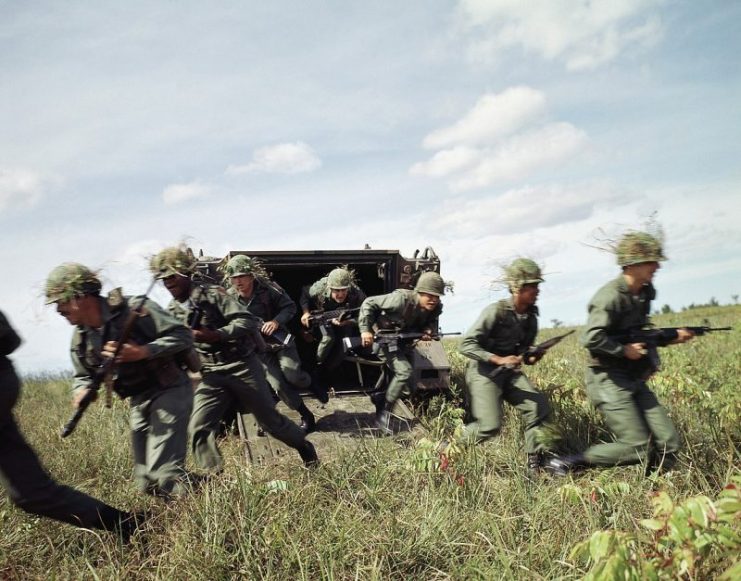
Mike Green is not someone to leave a stone unturned when he produces these books and his attention to detail is fully up to standard. While there are some superb photos to be admired, this volume is much more of a reference resource than a simplistic album of tank porn.
So, we have another winner from Michael Green. The Images of War range gives the publisher the flexibility to construct projects that we might expect to be the stuff of weightier hardbacked tomes that cost a packet for a lot less money. We all win.
There is an impressive amount of information to be had here, proving the author really knows his stuff. There will be more from him in due course.

US COLD WAR TANKS AND ARMOURED FIGHTING VEHICLES
By Michael Green
Pen & Sword Military
ISBN: 978 1 52672 721 3
I am a sucker for a big colourful warship book and this one from Philippe Caresse certainly fits the bill. The author takes us through the development, construction and operational history of the four completed ships of the Iowa-Class, those durable old girls who outlived the demise of the battleship age and went on to fight another day.
This is an immense book crammed with photographs, graphics and diagrams which will delight warship buffs. The author looks at the decision process that led to the construction of the battleships as a counter to developments in Japan where seriously big capital ships were in the making.
Mister Caresse looks at a lot of technical detail and presents a chapter giving an account of the careers of Iowa, New Jersey, Missouri and Wisconsin from World War II to Korea to Vietnam, the Lebanon and the 1991 Gulf War.
Along the way we also get to see the fate of Kentucky and Illinois, two further ships of the class which were cancelled during construction. The bow of Kentucky was used to replace that of Wisconsin which was wrecked in a collision with another warship.
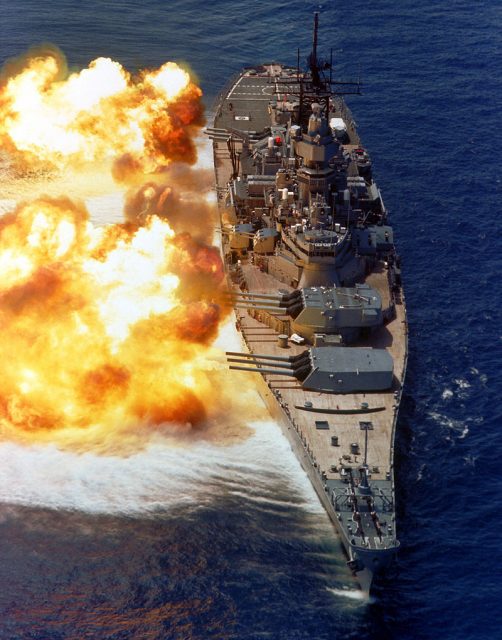
The author is correct to point out how remarkable it is that all four of the Iowa-Class survived into preservation. The ships lost in battle or to post war nuclear weapons tests are a case apart from the others that went to the scrapyard.
Only recently I got involved in a discussion about HMS Warspite, a battleship that survived the Battle of Jutland in 1916 and went on to serve throughout World War II. It’s easy to opine that the Old Lady might have been saved but it was not to be. The last British battleship of the era, Vanguard, was scrapped in 1960.
By that time the missile age was well under way and it was difficult to see a future for anachronisms from a bygone age, but the Iowa ships somehow managed to cling on.
To think that a ship that fired broadsides during WW2 was launching cruise missiles fifty years later is something quite incredible. The US taxpayer certainly got their money’s worth out of these fine ships.
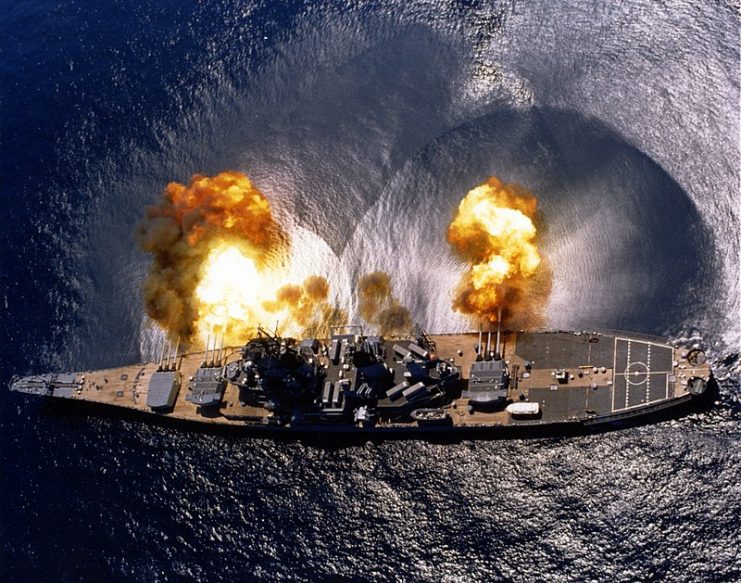
Mister Caresse has an excellent track record with histories of French capital ships. This time round he has given us another visually stunning book rich in of glorious archive photographs. It is a book to take your time over, because there is so much to take in.
Bruce Taylor’s translation from the original French is first class. All-in-all this is an eye-popping treat of a book that works on many levels.
Sad News, Bennie Adkins, Vietnam Warrior & Hero, Dead at 86
There is more than enough for serious devotees of warship history, while it will also appeal to general readers looking for something different. Highly recommended.

THE BATTLESHIPS OF THE IOWA CLASS
A Design and Operational History
By Philippe Caresse
Naval Institute Press
ISBN: 978 1 52677 318 0
Reviewed by Mark Barnes for War History Online
